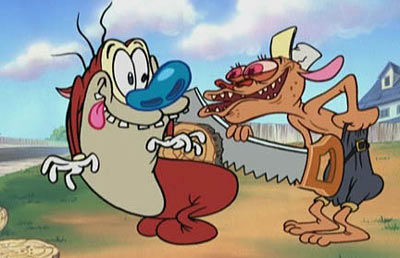CHINA BANS TV ADVERTISEMENT

China has banned advertisements during dramas and movies on television in the Communist party's latest move to assert control over the country's increasingly commercial media industry.
The rules, which come into effect in January, ban TV stations from running ads during films and drama episodes that run for 45 minutes or more. Analysts said they could slow the world's fastest-growing big advertising market next year, as the party's media campaign starts to have a commercial impact, or divert TV ad budgets to other media.
The State Administration of Radio, Film and Television, an arm of the propaganda department, has over the past two years stepped up its meddling in TV networks' operations. In 2010, it cut the amount of commercials stations could broadcast in prime time by a quarter. This year, it has pushed networks to cut entertainment programming in favour of morally edifying shows.
Earlier this year, the regulator forced Hunan TV, China's most commercially successful provincial broadcaster, to take "Supergirl", the nation's first and most successful talent show, off the air. Officials told the broadcaster that entertainment should take a back seat to "values, responsibility and quality".
In a key policy document passed last month, the Communist party pledged "cultural system reform" and said it wanted both to have market forces drive the media industry and for the party to control it.
The regulator explained its latest move with the desire to implement the leadership's decision, and "to fully utilise the TV networks to build a public cultural service system, raise the quality of public cultural services and guarantee the people's basic cultural rights".
Analysts said the new rules could throw the industry into disarray. Zhao Yihe, head of research at Charm Communications, one of China's leading advertising agencies, said they were "not going to be a lethal blow" to TV stations, but that they would hurt their ability to make money.
FINANCIAL TIMES DOESN'T GET IT. THEY CONTINUE TO WOFFLE ON ABOUT THE HOLY DOLLAR.
"I expect this to shave one or two percentage points off the growth rate of TV advertising next year, which we originally forecast to be about 15 per cent," said Mr Zhao. GroupM, the world's largest media investment management group, predicts that China's television ad spending will hit Rmb201bn ($31.4bn) this year, up 13 per cent from last year.
However, Seth Grossman, managing director of Carat China, said the Aegis-owned media agency had not changed its 11.8 per cent growth forecast for the whole Chinese ad market in 2012 because advertisers were likely to move money to other Chinese media.
"The first impact will be on [TV ad] pricing. China is still a very high demand environment, and that's a classic inflationary pressure. This doesn't take money out of the Chinese advertising market. It will go elsewhere," he said, predicting benefits for local television channels, online video outlets and outdoor advertising companies.
Domestic companies are the biggest spenders on Chinese TV ads, but some foreign brands like Nike, Toyota, Coca-Cola, Procter & Gamble and Sony are also present. Mr Zhao said the new regulations would create short term chaos as TV networks renegotiate advertising slots that were auctioned off as recently as this month.
... against capitalist excess

French Former First Lady Mitterrand Dies At 87
PARIS (AP) — Well before the Occupy movement took on Wall Street, the former first lady of France, Danielle Mitterrand, was leading the charge against capitalist excess.
"Everybody knows that the foundation of the system today is money: Money is the guru, money decides everything … That's why we are working to get out of this system," she told RTL radio last month, summing up a lifelong cause in one of her last interviews before her death Tuesday at 87.
Such resistance defined the life of Mitterrand, the widow of France's first Socialist president, Francois Mitterrand.
At age 19, with World War II raging, she went underground in the Burgundy hills with the French Resistance. She was awarded the Croix de Guerre for her work against the Nazi occupation of France and met her future husband, who had joined up under the code name "Francois Morland."
That union eventually gave her a bully pulpit — during Francois' 14 years as president — that she used to advocate for many left-leaning causes. She supported Marxist rebels in El Salvador, ethnic minorities such as Kurds and Tibetans and vociferously opposed capitalist excess.
They also had three sons together, one of whom, Pascal, died at a young age.
Danielle Mitterrand died before dawn after being hospitalized at Georges Pompidou hospital in Paris in recent days for fatigue, her foundation France Libertes said.
As first lady, Mitterrand shucked the tradition of her predecessors who largely kept to the background. In a 1986 interview with The Associated Press, her blue eyes flashed at the suggestion she resembled a high-profile American first lady.
"There is no traditional role" for a first lady, Mitterrand said. "Each woman has her own personality and … acts according to her conscience and her sensibilities."
Yet in contrast to her outspoken approach to politics, she kept quiet for years about one aspect of her personal life: a secret relationship her husband had had with Anne Pingeot, a museum curator 28 years his junior and the mother of his long-secret daughter, Mazarine Pingeot.
He died of cancer less than a year after leaving office in 1995. In an especially poignant moment in French politics, the widowed Danielle stood before the late president's coffin alongside his mistress and daughter, whose out-of-wedlock birth and existence were long kept from the French public.
Her foundation said Danielle Mitterrand found guidance in a phrase of French philosopher Jean-Paul Sartre: "It's not right to want to heal the suffering of people without committing to fight the very causes of this suffering."
She created several charities and crisscrossed the world in defense of human rights. She once even kissed Cuba's revolutionary Fidel Castro at a residence for visiting dignitaries near the presidential Elysee Palace.
Mitterrand urged worldwide unity to "put an end to economic and financial dictatorship, the henchman of political dictators. Finally, they seem to be shaken by the anger of peoples."
"Of course, the world revolves around the Dow Jones, the Nikkei stock index or the CAC 40 (French stock index). … But all around the world, little voices are being raised to say that man is unhappy even if the stock market is doing well," Mitterrand told Le Figaro newspaper in 1996.
Thirteen years ago, Mitterrand visited in prison Mumia Abu-Jamal, a former Black Panther who has spent nearly 30 years on death row over his 1982 conviction for killing a white police officer in Philadelphia.
And in 2008, Mitterrand denounced American support for foes of Bolivia's leftist president Evo Morales, and accused "fascist gangs" of intimidating native peoples in the South American country.
France Libertes, whose focus has been human rights and had recently made a top priority of getting drinking water to those without it around the world, said Mitterrand left behind "a message of hope."
Praise and appreciation for her poured in from across France's political spectrum Tuesday.
President Nicolas Sarkozy's office said: "Neither the setback or the victory caused her to deviate from the road she had laid for herself: giving a hearing to the voice of those that no one wanted to hear."
Her nephew Frederic Mitterrand, who now serves as culture minister in Sarkozy's conservative government, told BFM TV that his aunt "did a lot to humanize the role of first ladies."
Danielle Emilienne Isabelle Gouze was born Oct. 29, 1924 in Verdun, a town in northeastern France known as one of World War I's biggest killing fields.
Under the Nazi collaborationist Vichy regime during World War II, her father, a Socialist-leaning school principal, lost his job after refusing a state order to list all Jewish students and teachers for authorities, according to Mitterrand's foundation.
In March 1944, she took her own stand and joined the Resistance.
She is survived by sons Gilbert and Jean-Christophe. A burial service is planned Saturday in the eastern town of Cluny, her foundation said.

























 Earth's magnetic field:
Earth's magnetic field:
